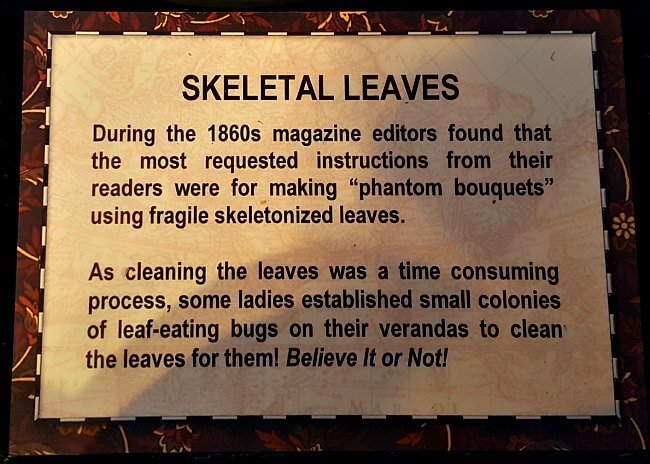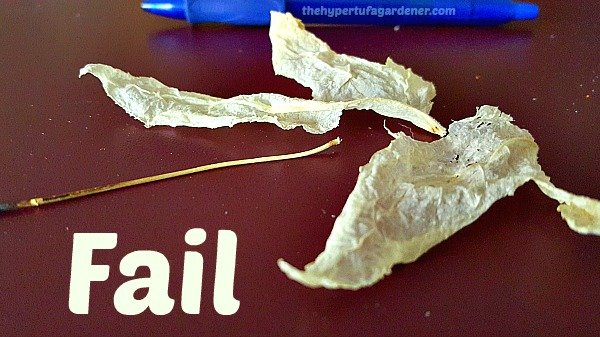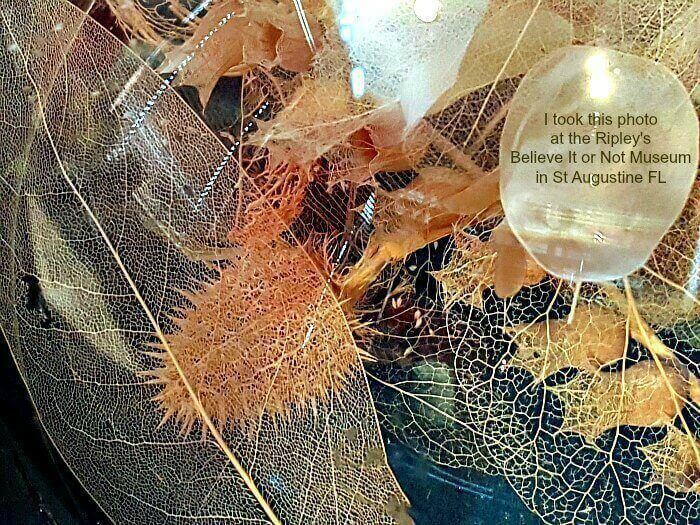Skeletal Leaves , A Great Craft Project, They Said
I had high hopes for a great craft project, a leaf project.
Seeing a delicate and fragile display of skeletal leaves at a museum, the Ripley’s Believe It or Not Museum in St Augustine, Florida, I thought, ” What a great idea for a craft project. A really extraordinary leaf project to try.” Those leaves looked delicate and fragile and just seemed to bring out the “Maybe I can do something like that!” thought. It could have my own to frame or display, so I thought I would try it.

I guess I didn’t think this through.
The information was right there on the placard in the display for me to see.
As usual, my mind is off and running thinking “google it” and I can find instructions on how to do this and wouldn’t it make a great post on the blog. I will do a step by step tutorial. And yada yada yada…

I followed the directions from a website that I found for making skeleton leaves. Here’s the site: http://www.hometrainingtools.com/a/leaf-skeleton
One of the items I didn’t have was sodium carbonate, which is washing soda. I had the sodium bicarbonate (baking soda) and I found a site that told me how to change bicarbonate to just carbonate. But here is where I ran into my first problem. Note to self: Learn to read instructions. Get the details correct!
The instructions were to bake sodium bicarbonate and it turns into sodium carbonate…..and voila! You have the sodium carbonate. ( Heating the sodium bicarbonate causes it to release carbon dioxide and therefore change into sodium carbonate.)

So I read all the instructions and put my baking soda ( sodium bicarbonate) into the oven at 200° about a half hour. Then merrily went on my way with the rest of the instructions.
I had to boil and simmer the leaves in water and my sodium carbonate solution for about 30 minutes. But my leaf didn’t seems to “release” its green very easily. If fact, I tore up some leaves when I “brushed them gently”, and I was about ready to chuck the whole load out into the back yard. So frustrating…….

So I looked back through the instructions again and this time something caught my eye. http://naturesnurtureblog.com/ttt-turn-baking-soda-into-washing-soda/
As any first grader is taught ( or probably taught now in kindergarten), a temperature is given a letter C for Celsius or F for Fahrenheit.
Yeah, I know you are way ahead of me. I was to bake the sodium bicarbonate at 200°C which in my oven would be about 400°F.
I neglected to note C under that 200° instead of F.
So I was just warming it up a bit at 200°F , instead of really heating it to get the sodium carbonate. <sigh>
My Conclusions about Making Skeletal Leaves
- You must be able to read detailed instructions and follow them.
- Don’t get your hopes up and think you are going to get something like this:

…..because what I ended up with was like this ( mine is sweet gum ) :

I may try it again with fresh leaves instead of the autumn leaves which have already turned. And maybe just let a “colony of leaf-eating bugs” take care of it as the placard in the museum said.
Meanwhile, I think I will just stay with my hypertufa.
Here is a site to see some photos of really elaborate skeletal leaves which are called Phantom Leaves. Who knew? Phantom Flowers



